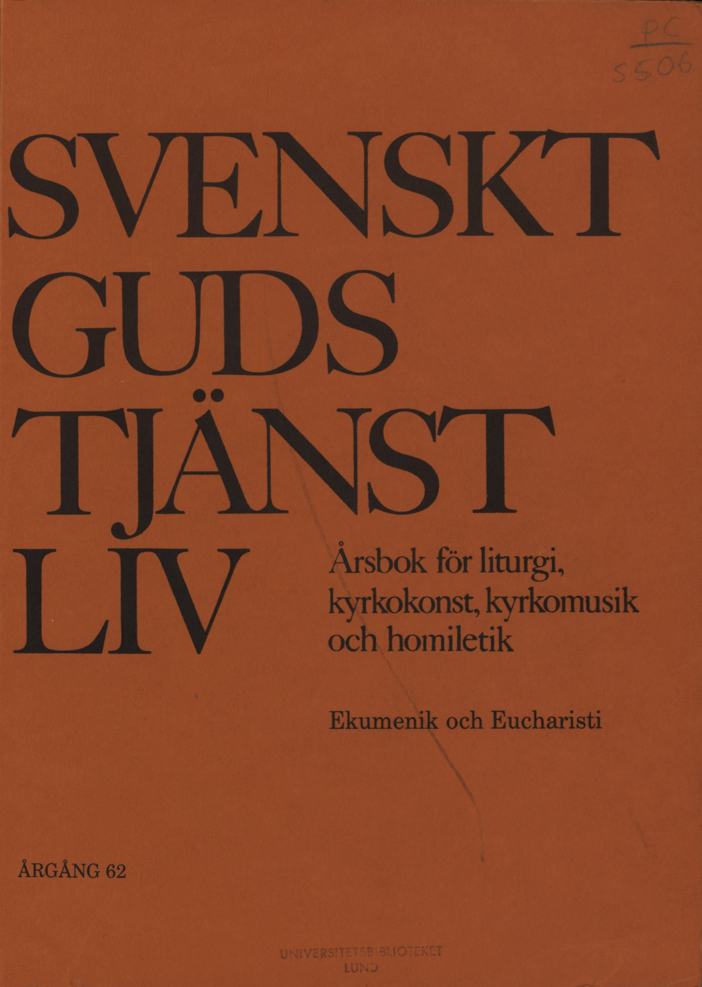Eucharistins plats i kyrkorummet (The Eucharist’s Place in the Place of Worship)
Abstract
Christian worship space has undergone great changes in the later part of 20th century, perhaps the greatest changes since the Middle Ages. The altar has been lifted into the centre and therefore gained a new symbolic meaning: God in our midst. This reflects the renewal of the eucharist, a common goal of many churches. Developments in Sweden, particularly within the Church of Sweden, the Mission Covenant Church (Congregationalist), and among Baptists.
In the Church of Sweden development from the church with a long nave to a more centralized form can be clearly seen. With the new basic plan came more flexible and simple furnishings, altar, pulpit (or ambo) and baptismal font. The altar is often free-standing and not raised above floor level. Seating is arranged around the liturgical zone. It is common that the worship space is connected with the parish’s social facilities. This places new demands on the worship space’s architecture and function. Somewhat disturbing is the apparent lack of ability among both the clergy and laity to make use of the worship space’s liturgical possibilities in a proper way (an ex ample being free-standing altars). The Church of Sweden has put considerable work into liturgical renewal in various studies. But, few if any, have taken up questions regarding worship and the worship space concurrently.
One could say that the free denominations are becoming more like the established church but by choosing models which the Church of Sweden is now leaving behind, the church with a long nave. This tendency is most clear in the Mission Covenant Church. This development has gone hand in hand with development toward a more fixed order of worship. Baptists also have several new churches with these characteristics. The communion table is often centrally located and emphasized with a work of art. The communion table plays a relatively minor role in the eucharist among Baptists, but the presence and meaningful placement of the communion table indirectly communicates the centrality of the eucharist and its renewal.
Translation: Richard Stetson
Downloads
Publicerad
Nummer
Sektion
Licens
© författarna, Laurentius Petri Sällskapet för svenskt gudstjänstliv samt Artos & Norma bokförlag. Det är tillåtet att kopiera och använda material ur Svenskt Gudstjänstliv för forskningsändamål om källan anges. För övriga ändamål kontakta respektive artikelförfattare samt förlaget. Särskilda restriktioner kan gälla för bildmaterial.


